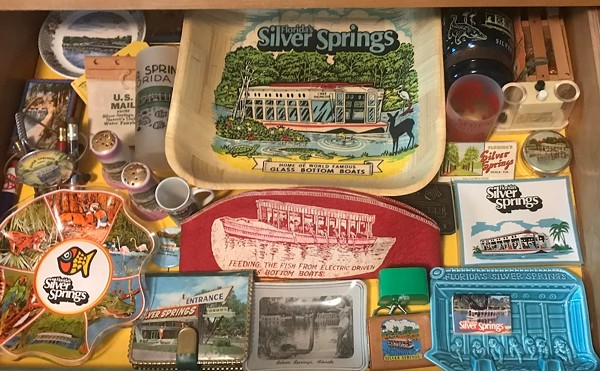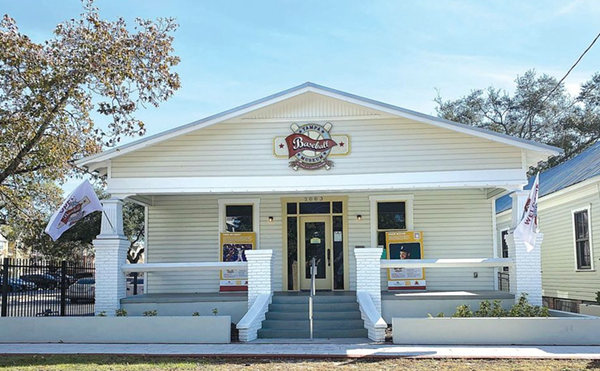THREE BY JOHNS: Savarin (1977); Figure 1, (1969); Flags II (1970). All lithographs.
Images courtesy John and Maxine Belger Family Foundation
Virtually every artist, no matter how modest, aspires to create a body of work that will serve as a turning point for artists to come. For American art during the second half of the 20th century, Jasper Johns' paintings stand out as just such a touchstone: an undeniable watershed, on either side of which stands "before" and "after."
Along with works by Robert Rauschenberg (Johns' onetime roommate and friend), Johns' images of targets and the American flag eased open the door for conceptual art and the postmodern revelry of pop art to follow. In Johns' hands, painting graduated from its role as a window onto a simulated reality and became the site of a philosophical investigation about what it means to make images in the context of mediated culture (a debate that rages on today).
Still at work in his Connecticut studio, as of a New York Times report last year, the elder statesman of contemporary art can also lay claim to a prototypically late-20th-century measure of success. His False Start stands as one of the most expensive paintings ever sold — painted in 1959, and sold for $80 million in 2006 by Hollywood mogul David Geffen to hedge fund manager Kenneth Griffin.
Now a collection of Johns' prints spanning 40 years alights at the Arts Center to shed light on the living legend's work. The prints run the gamut from relatively simple (and small) black-and-white intaglio prints to impressively large, multi-plate lithographs in bright color. (And there's an interesting back story; the prints are on loan from the John and Maxine Belger Family Foundation, the Kansas City, MO institution which recently hired Evelyn Craft as executive director, the job she currently holds at the Arts Center and will be leaving March 31.)
The subject matter of the prints falls into the category of what Johns has famously described as "things the mind already knows," a phrase which serves as the exhibition title. Quotidian-yet-iconic objects: the Ballantine Ale can, the Savarin coffee can filled with paintbrushes, a lightbulb, a target, a flag, stenciled numbers and letters. How Johns manages to render these things so full of suggestion about the way we perceive and interpret images (and the power and responsibility of image-making) remains the fugitive mystery of his work — still compelling in a oddly meditative way, no matter how sophisticated we've become as image consumers. Perhaps the most affecting examples are the quietest. While the numeral one veritably vibrates through Rothko-esque tiers of blue, red and yellow ink in the 1969 lithograph Figure 1, the energy surrounding a diminutive etched light bulb or beer can is even purer and more piercing. (Perhaps because they recall Johns' sculptures of those objects, recently featured in the Metropolitan Museum of Art showcase, Jasper Johns: Gray, or because they pay such literal homage to Marcel Duchamp and his Fountain.)
Not incidentally, the Belger Family Foundation's eponymous collector, John Belger, and his son arrived at collecting fine art by way of first collecting cars, guns, coins and decorative arts, according to the exhibition catalog essay by Roy Slade, director emeritus of the Cranbrook Art Museum. Johns' Fragment-According to What (Coat Hanger and Spoon), a 1971 print featured in the show, became the first contemporary work to enter their collection.
Like most of his works, Fragment translates a pair of utterly unromantic objects into a kind of poetic puzzle. Even in figurative works from the 1990s (generally agreed to be a more introspective period for the artist), exactly what Johns is searching for remains elusive. Despite their richness of concept, his reiterative, nearly ascetic investigations remain irreducible to just the idea. However, what clearly emerges as a consequence of his toiling is the satisfaction of seeing a mind and creative hand at work — one of the best, no less.


















